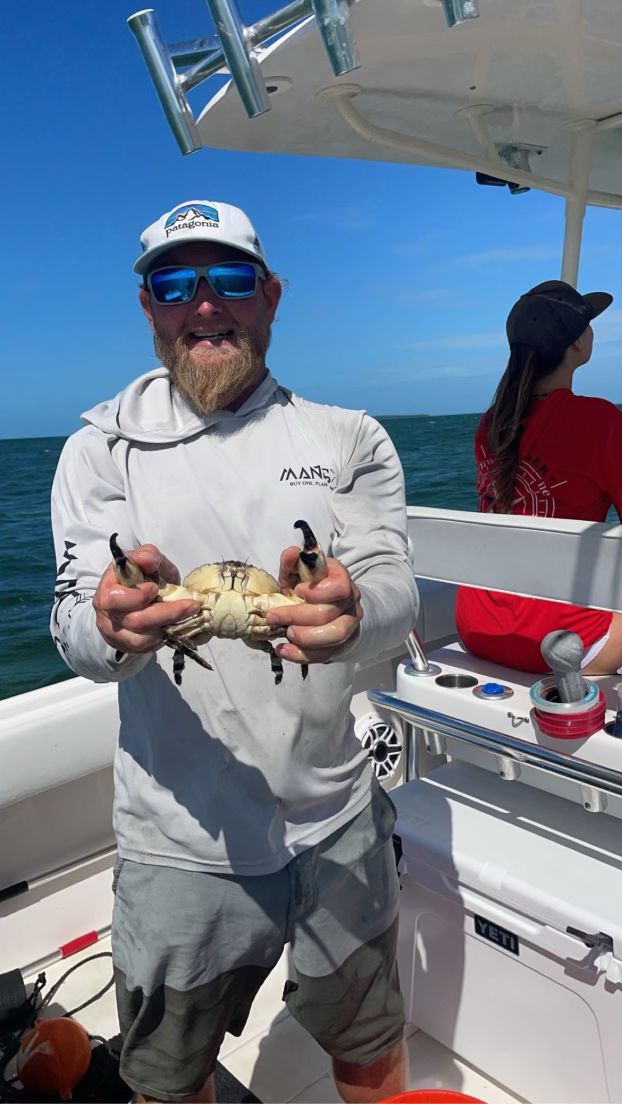


Stone crab is considered a great delicacy in Florida, both because of the delectably rich,
firm and sweet crab meat, and due to its limited availability. To help protect stone crabs
from being overfished, government regulations only allow them to be harvested from
October 15th to May 1st. Additional sustainable harvesting regulations include harvest
limits, throwing back egg carrying females, and only harvesting the claws, not the whole
crab.
If you are in Florida in the prime Stone Crab winter months, make sure to sample some of
these tasty claws! We think the best places to get them in Key West are Dantes for happy
hour, or Eaton Street Sea Food Market.
Most crabs are caught in baited traps, though some are caught by hand. It is illegal to use any gear that can injure the crab body.
Each harvester is allowed a maximum of five traps, and the bag limit is no more than one gallon of legal claws per day.
There is a size requirement for harvesting claws. Any claws under 2 7/8” are too small to
harvest, and the crabs are thrown back untouched. Claws are measured along the
propodus; the larger, immovable part of the claw. The largest male claws reach 5 1/2”,
females about 4 3/4”.
It is legal to harvest both claws on the Stone Crab if both are of size. However, if only
one is of size then only that one is allowed. It is important to measure both claws.
Research suggests that the crabs are more likely to survive if left with one claw with
which to defend themselves and catch prey.
If the claw joint is left intact, the crabs are able to regrow their claws after roughly three
molt cycles. Adults molt about once a year, juveniles up to three times a year. Part of
sustainable harvesting is making sure to leave the claw joint intact when harvesting
claws!
It is illegal to harvest claws from ovigerous, or egg carrying, females. The egg sacks are
known as sponges and are easy to identify— flip the crab over to see its belly, and if
there is an orange or brown sponge, throw the female back without taking claws.
Come Enjoy our smooth riding ocean going 25 ft Hydrasports center console upgraded with twin 200 EFI engines. Whether you’re looking to jump in the water at the sandbar and turn up the JL Audio system while you enjoy a cold one or make a quick and comfortable ride out to the reef our boat is just right for the occasion.
Come spend the day on our 26ft Intrepid for a day of water adventures and sun in Key West. Our private boat is the perfect size to get you anywhere you want to go and support a wide range of activities, in local style. We want to get you on the water so you can kick back, explore, and enjoy your best life in our beautiful Florida Keys.
Activities range from fishing, snorkeling, lobstering, exploring the backcountry, looking for dolphins and other wildlife, throwing a football around or chilling at the sandbar. Grilling and drinking anywhere, anytime. Or just taking the time to enjoy a beautiful key west sunset. We can do it all or just one thing. It’s Your Island Charter to do what you want.
We can leave from either Stock Island or Key West proper. All gear for activities is supplied. Coolers will be stocked with ice and water, but you are welcome and encouraged to bring any additional food and drinks desired.
Your Island Charters Stock Island Yacht Club 6000 Peninsular Ave, Key West, FL 33040
1.920.517.8435 (call / text)
YourIslandCharter@gmail.com
https://YourIslandCharter.com
